A hyperactive dog can be a real challenge for dog owners. Constant running around, excessive barking, and a seemingly inexhaustible urge to move are typical signs. In this article, you'll learn which foods can increase restlessness and nervousness and which nutrients help calm your dog. You'll also receive practical tips on proper feeding to positively influence your dog's behavior.
|
What is hyperactivity in dogs?
Not every energetic dog is hyperactive. Many young dogs or certain working breeds (e.g., Border Collies, Malinois) have a naturally high need for exercise. Clinical hyperactivity disorder exhibits measurable symptoms, such as increased heart rate and stress hormones, which indicate physiological arousal (Overall et al., 2013).

True hyperactivity disorder in dogs is often compared to attention deficit hyperactivity disorder (ADHD) in humans, as similar neurological mechanisms may be involved. Studies show that affected dogs have lower dopamine and serotonin levels ( González-Martínez et al., 2024 ).
Typical signs of a hyperactive dog:
- ✅ Restless behavior – constantly running around, even for no apparent reason
- ✅ Excessive barking or whining – often without a clear cause
- ✅ Short attention span – difficulty concentrating
- ✅ Impulsivity – reacts hectically to stimuli, difficult to control
- ✅ Destructiveness – bites furniture, shoes or other objects
1. Possible causes of hyperactivity in dogs
Genetic predisposition plays an important role in hyperactive dogs, so balanced parents should be chosen when breeding. Some breeds (e.g., Border Collie, Jack Russell Terrier) are naturally more energetic. A neurotransmitter imbalance in the brain can also influence hyperactivity. Dopamine and serotonin, in particular, play a crucial role in regulating impulse control and attention.
Incorrect training , such as a lack of rules or inconsistent training, encourages hyperactive behavior in dogs. Uncertainty about expectations , due to aversive methods, can also cause agitated behavior.
If a dog isn't given enough mental or physical stimulation , it can become restless and stressed due to insufficient stimulation. Some dogs were bred to work with humans and are specialized accordingly. If they can't demonstrate their innate abilities, they develop undesirable behaviors.
Unresolved environmental fears can also lead to nervous behavior. This can occur due to a lack of or incorrect socialization .
Finally, an inappropriate diet can also adversely affect hyperactive behavior. Certain ingredients in food can exacerbate hyperactivity by causing blood sugar fluctuations, overstimulating the nervous system, or affecting the production of important neurotransmitters. Thus, nutrition and behavior are closely related.
For example, a dog that regularly eats dry food with a high grain content, especially corn, often exhibits hyperactivity due to constantly fluctuating blood sugar levels. Foods containing glucose syrup or molasses are particularly problematic.
2. The role of nutrition in hyperactivity in dogs
The composition of dog food significantly influences a dog's behavior. Blood sugar fluctuations, artificial additives, and imbalanced nutrients can increase restlessness and nervousness.
2.1 Carbohydrates and blood sugar
One of the main causes of hyperactive behavior can be unstable blood sugar levels . Foods high in simple carbohydrates (e.g., corn syrup, various fillers, fructose from apples and berries) and added sugar lead to a rapid rise in blood sugar. This results in a short-term burst of energy followed by a rapid drop – which can lead to nervousness, restlessness, and difficulty concentrating. Complex carbohydrates (e.g., rice and sweet potatoes), in contrast, lead to a moderate rise in blood sugar because they are digested more slowly. Since there is no sudden rise, energy levels remain constant, and drops in blood sugar, cravings, and increased nervousness or hyperactivity are avoided.

2.2. Fatty acids: Omega-3 fatty acids have a calming effect and support brain function
Omega-3 fatty acids, especially DHA and EPA, are crucial for healthy brain function and emotional stability. A deficiency in these fatty acids can contribute to hyperactivity, nervousness, and concentration problems in dogs.
2.3. Vitamins & Minerals: A deficiency in B vitamins, magnesium or tryptophan can increase nervousness
Tryptophan is an essential amino acid required for the production of serotonin—the "happy hormone" that promotes relaxation and emotional stability. A tryptophan deficiency can lead to increased irritability, restlessness, and impulsive behavior.
2.4. Too much or poor quality protein
Proteins are important for brain function and muscle development, but an overabundance or poor-quality protein sources can promote restlessness. Highly processed animal protein or animal by-products often contain proteins that are difficult to digest , which can burden the intestines and lead to an excessive release of stress hormones. This, in turn, promotes hyperactive behavior in dogs.
2.5. Artificial additives
Artificial colors, flavors, and preservatives are suspected of stressing dogs' nervous systems and promoting hyperactivity. Certain synthetic additives are suspected of triggering brain inflammation and disrupting neurotransmitter balance.
3. An overview: food and hyperactivity
Avoid these ingredients if you are hyperactive:
🚫 Sugar & artificial sweeteners
🚫 Artificial colors and preservatives (E numbers)
🚫 Highly processed, simple carbohydrates (e.g., corn, fillers)
🚫 Low-quality protein sources (animal by-products, processed protein)
Some nutrients help to strengthen the nerves and calm the dog:
✅ Omega-3 fatty acids (e.g. in salmon oil, linseed oil) – Support the nervous system.
✅ B vitamins (e.g. in eggs, liver) – Promote concentration and inner calm.
✅ Magnesium (e.g. in pumpkin seeds, spinach) – Has a relaxing effect on muscles
✅ Tryptophan (e.g. in turkey, cottage cheese) – Promotes serotonin production
Recommended foods that can reduce hyperactive behavior in dogs:
✔ High-quality food: without sugar and artificial preservatives
✔ Fresh meat & fish: high-quality animal proteins and fatty acids
✔ Vegetables: Support digestion and soothe the gastrointestinal tract

4. Tips for dealing with hyperactive dogs
- Sufficient exercise : A dog that can exercise daily is more balanced.
- Mental stimulation : Search games, intelligence toys or nose work promote concentration.
- Fixed routines: A clear daily routine provides security and reduces stress.
- Create quiet zones : A quiet place to sleep without distractions helps you relax.
- Targeted training : promote positive reinforcement and avoid punishments.
💡 Conclusion: Nutrition as the key to more calm in hyperactive dogs
A holistic approach consisting of species-appropriate nutrition, sufficient exercise, and mental stimulation can help sustainably reduce your dog's hyperactive behavior. Of course, some dogs also exhibit nervous behavior due to chronic or acute problems. Especially in cases of sudden changes in behavior, it is essential to consult a specialist (behavioral therapist, veterinarian).
Sources
FAQs
What does "open declaration" mean?
The " open declaration " in the context of dog food refers to the transparent disclosure of information about the composition of the food in terms of the individual ingredients and their processed quantities.
"Open declaration" means that we transparently list all ingredients and their exact percentages in Alpenwuff food. So you always know exactly what's in every bag of Alpenwuff.
An open declaration serves to give pet owners clear information about the food so they can make informed decisions about their daily diet. By reading the declaration, pet owners can determine which main ingredients are contained in the food. This helps to rule out allergens, evaluate the quality of a food, and develop an understanding of a dog's behavior. For example, if a food consists primarily of corn, this is often reflected in its behavior. An open declaration therefore makes it possible to ensure that the food meets the dog's individual needs and promotes its health. In addition, the declaration ideally includes information about the manufacturer and the manufacturing process, which creates confidence in the product quality and traceability of the raw materials.
Why should cold-pressed food be better?
The comparison between extruded and cold-pressed dog food can be shown using several aspects that illustrate the advantages of cold-pressed food:
- Gentle manufacturing process: Cold-pressed feed is produced at lower temperatures (60°C). In contrast, extruded feed is produced at high temperatures (up to 200°C), resulting in a greater loss of natural nutrients.
- Better nutrient preservation: The gentle manufacturing process helps to better preserve the natural nutrients of the ingredients, similar to steam cooking. Due to the gentle temperatures, natural vitamins and nutrients in cold-pressed food remain largely intact.
- Better digestibility: Cold-pressed food breaks down quickly into its components in the dog's stomach and doesn't bloat when exposed to liquid like most extruded food briquettes. This means the nutrients are quickly accessible and digestible. The easier digestibility of cold-pressed food can help dogs experience fewer digestive problems. This leads to less bloating and an overall happier dog.
To what temperature is the food heated?
Our feed is gently cold-pressed at low temperatures to preserve nutrients. The cold press reaches a maximum temperature of approximately 60°C.
"Food without compromise" - We want more dogs to be fed healthy food!

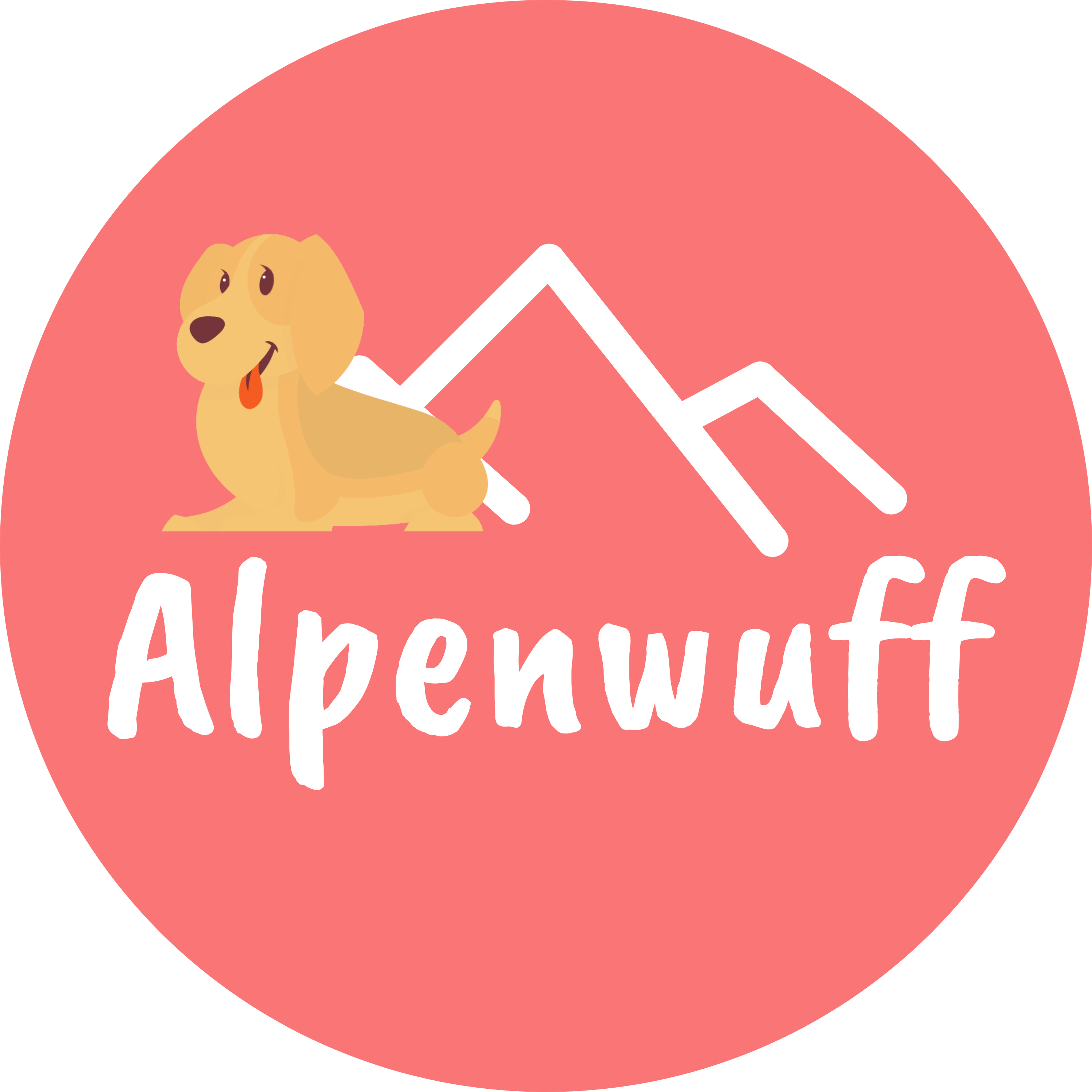
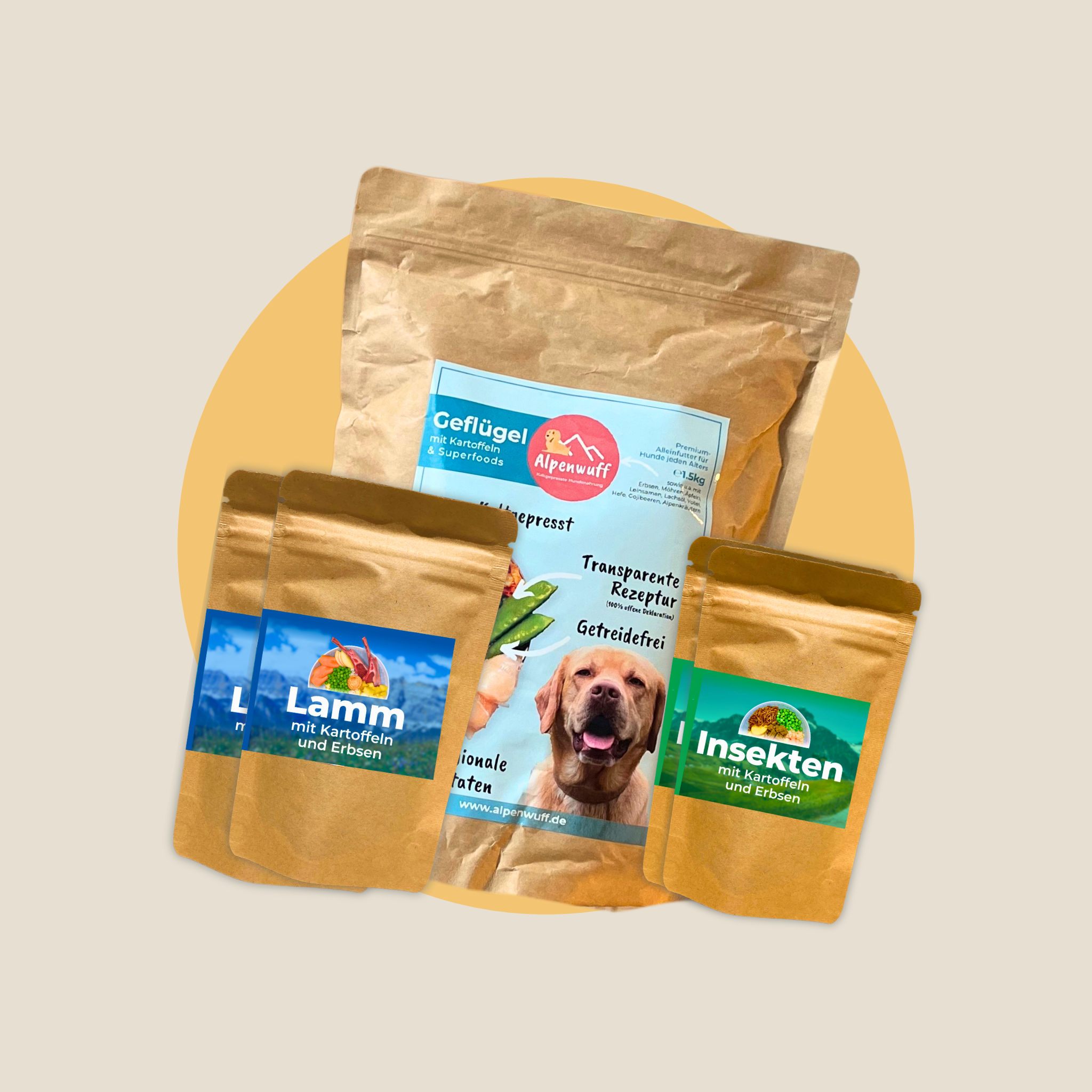
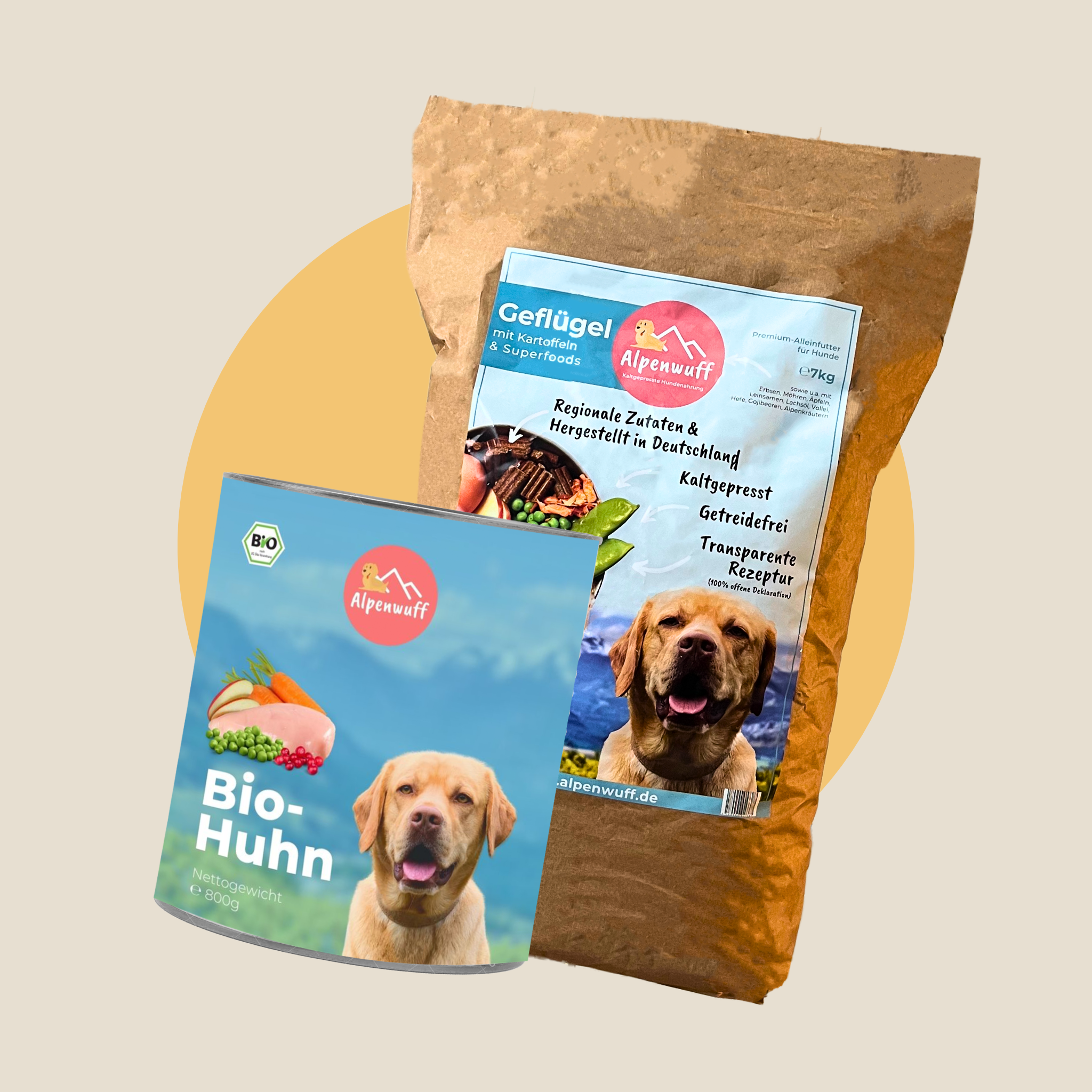
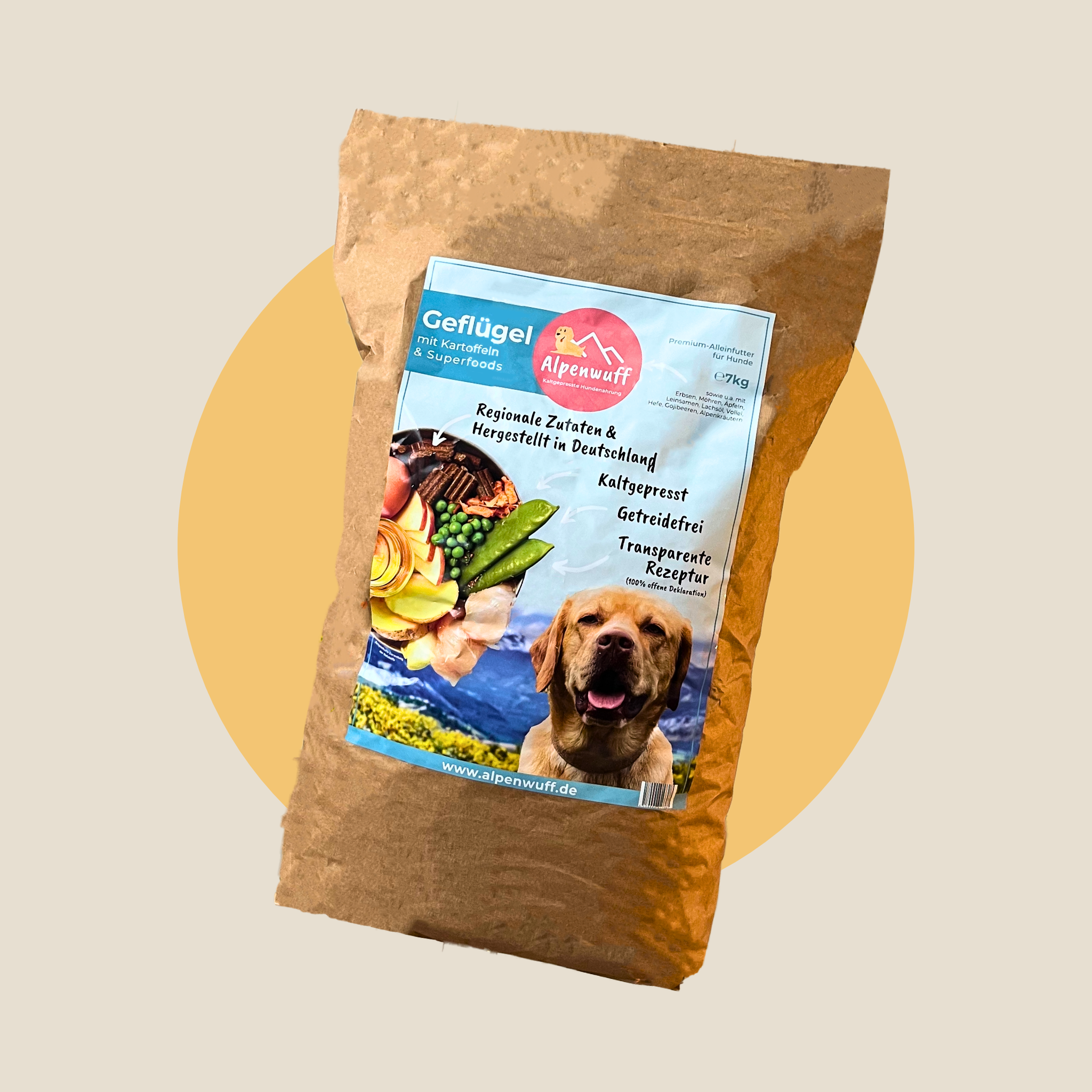
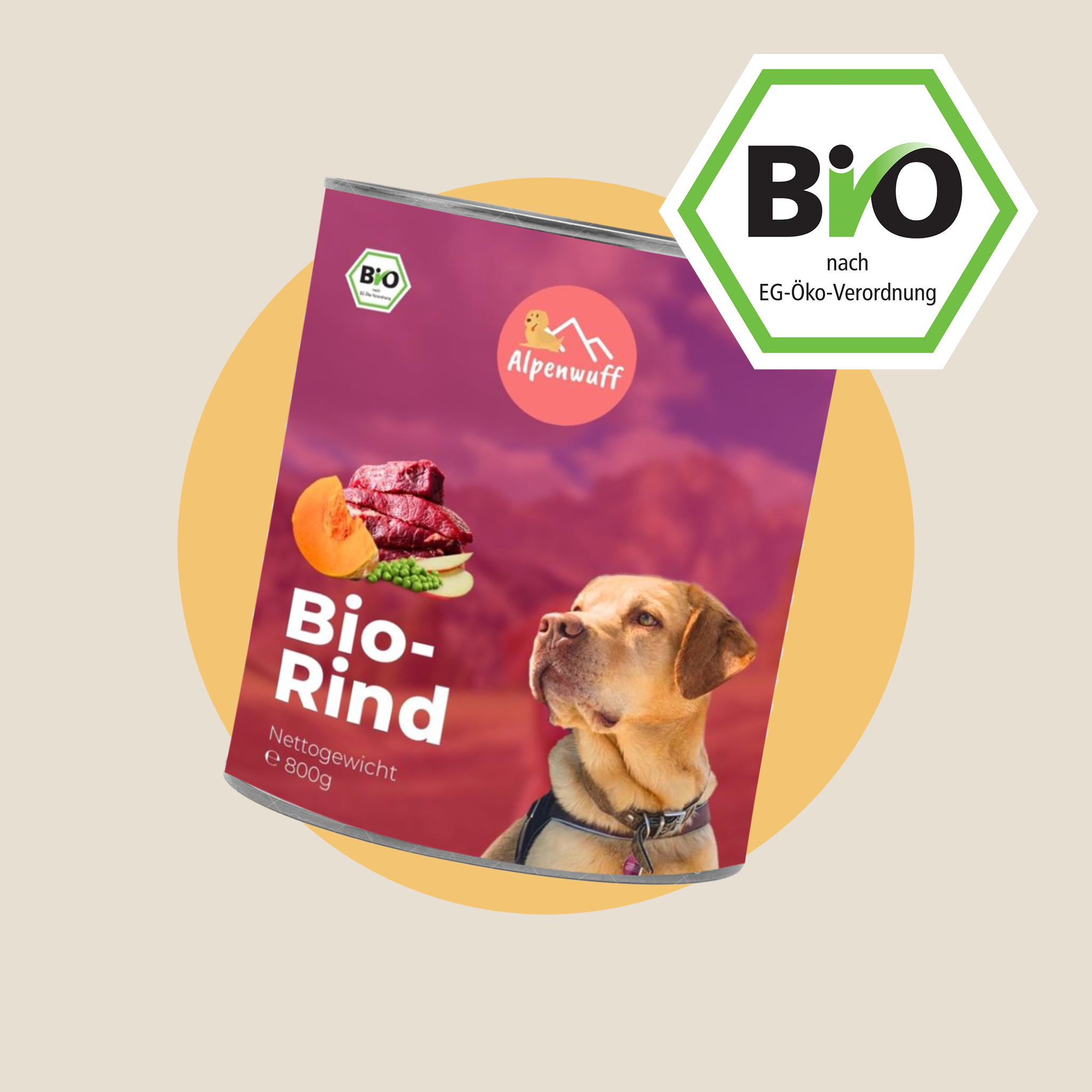
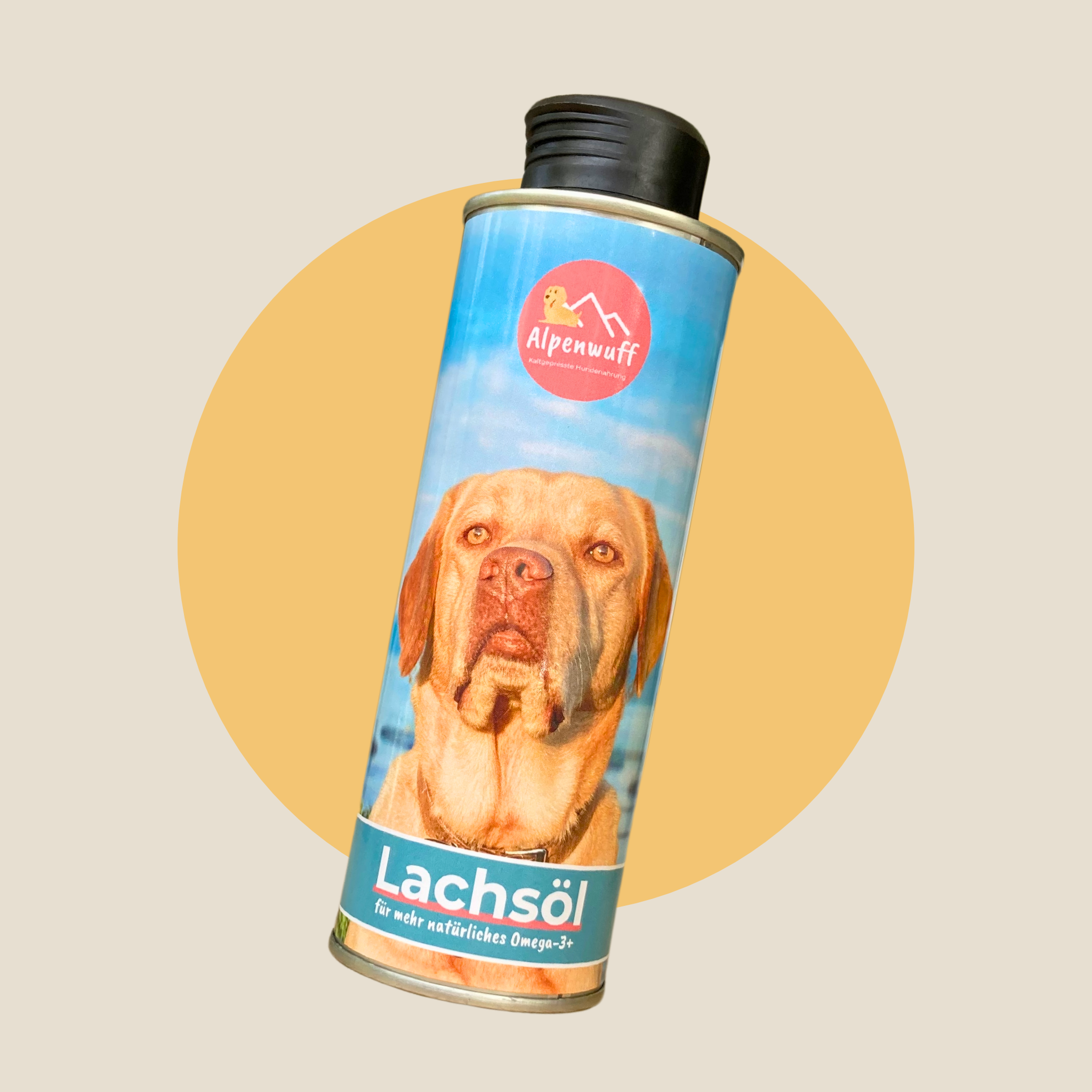
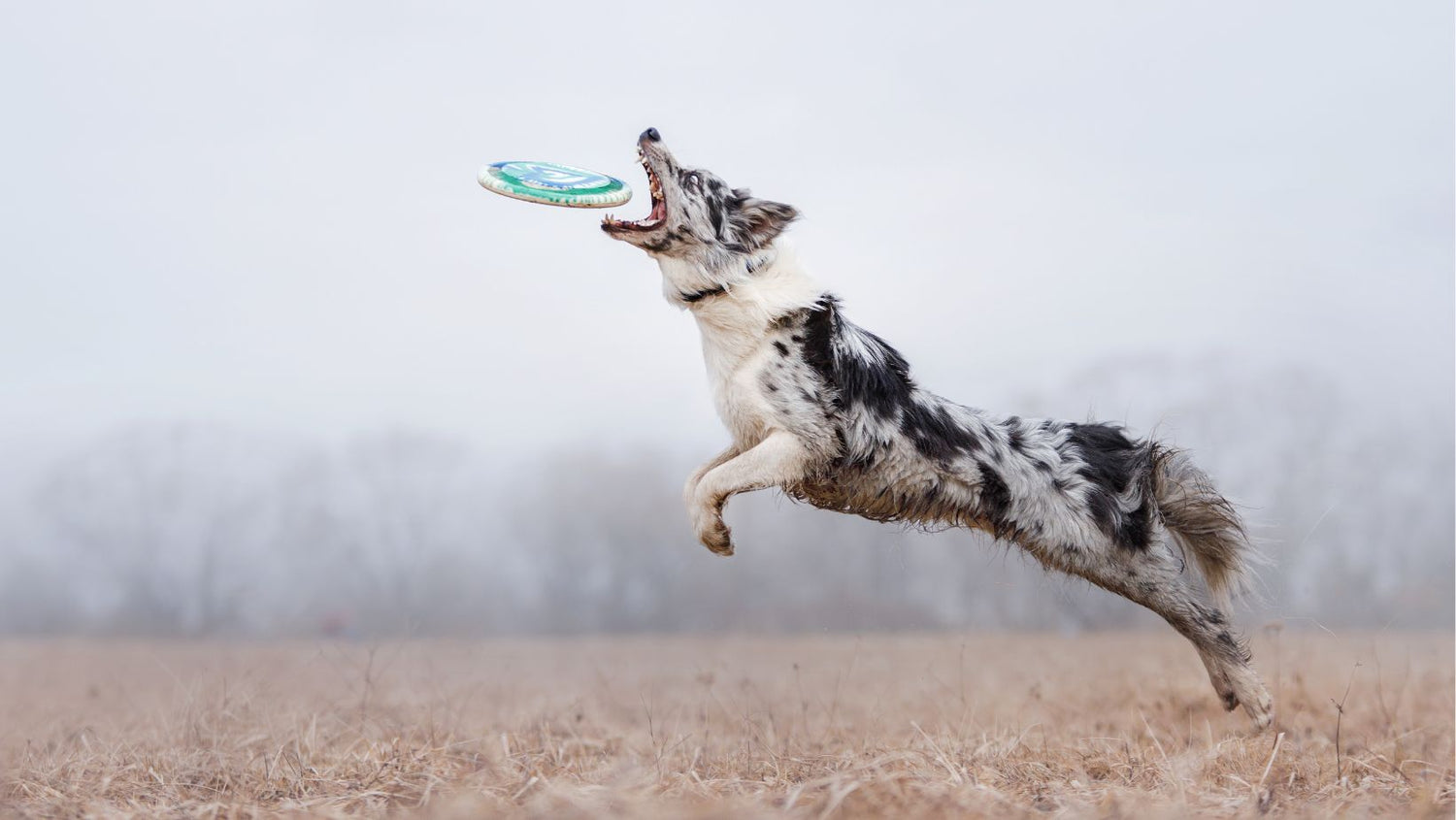





Leave a comment
All comments are moderated before being published.
This site is protected by hCaptcha and the hCaptcha Privacy Policy and Terms of Service apply.